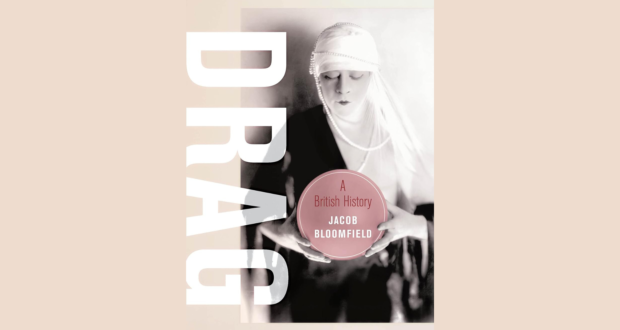A thoughtful and fascinating read, Bloomfield eloquently and persuasively takes the reader on a journey illustrating the role Drag played in both theatrical performance and the public’s acceptance of the form in the century leading to the abolition of theatre censorship. Summary
Rating
Unmissable
Drag takes the reader on a fascinating journey illustrating the role Drag played in both theatrical performance and guiding the public’s acceptability of the form with its inevitable links between cross dressing and male homosexuality from 1870 to 1970. Starting as it does in a period when theatre was the dominant cultural form, epitomised by the hugely popular music hall, the research is concluded in 1970.
1968 marked the abolishment of theatre censorship by The Lord Chancellor’s Office, and so an explosion of uncensored theatrical material followed, inspired in many ways by the Stonewall riots of 1969, which undoubtedly changed the dynamic of Drag representation. It should probably go without saying, but private homosexual acts between consenting men over 21 were only legalised in the UK in 1967. The relevance of this cannot be underestimated when considering the approaches and acceptance of male cross dressing in public performances prior to that point. Bloomfield examines this across the decades alongside its flawed link to homosexuality and the unsavoury associations with criminal activity.
Bloomfield eloquently and persuasively demonstrates that Drag performance in the century leading up to The Theatres Act defies expectation. Drag, or cross dressing in performance, has always been a demonstrably popular form of entertainment. When looked at across history, it can be helpful in understanding popular British culture more generally, which also provides a space where gender and sexuality can be visible and discussed.
Interestingly, Bloomfield manages to challenge the assumption that the acceptance and representation of female impersonation and male cross dressing has developed consistently from Victorian condemnation to widespread acceptance. Conservative Victorian values did not prevent the growth of Drag as a popular form of performance and nor did the perceived growth of liberal societal attitudes in later years ensure widespread acceptance.
For anyone that is interested in the history of theatrical performance, and how it is both shaped by, whilst influencing public opinion, it is a most interesting and gratifying read. After a detailed introduction, Bloomfield uses the next four chapters to highlight particular performers who created on-stage personas that still have application today. All have historical relevance, mostly unexpected, and all have a different relationship with and approach to cross dressing and sexuality. Many can be seen to have influenced performances we would recognise today. The Dame, for example, first seen in a 1697 production of The Provoked Wife by John Vanbrugh, is epitomised by feisty, surprisingly agile older characters which predate the Dame that we more commonly associate today with pantomime. Complex characters that require nuanced acting and comedic skills, they are a step up from mere titillation and their influence can be seen in more recent populist productions such as Mrs Brown’s Boys. By contrast, Danny La Rue, a highly popular Drag act in the 1960s, wore formal lavish feminine Victorianesque attire and was clear that he represented a more conservative style of entertainment that avoided grotesque lewdness as an antithesis to the more permissive society of the age.
A detailed and complex piece of academic research, it is nonetheless an easy and entertaining read made accessible by the examples Bloomfield has chosen. All components are set alongside the legal framework of the time and the public’s understanding, support and enjoyment of the genre. It is a nuanced and thoughtful consideration of British social history.
Written by: Jacob Bloomfield
Published by: University of California Press
Drag: A British History is available from all good bookshops.
 Everything Theatre Reviews, interviews and news for theatre lovers, London and beyond
Everything Theatre Reviews, interviews and news for theatre lovers, London and beyond



